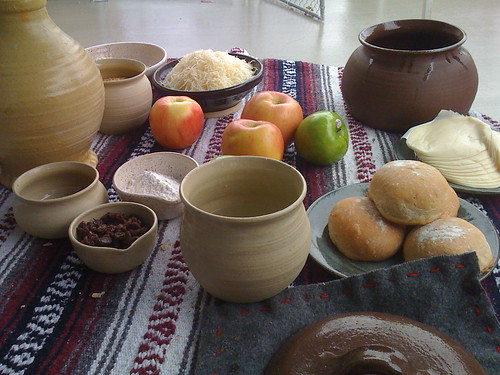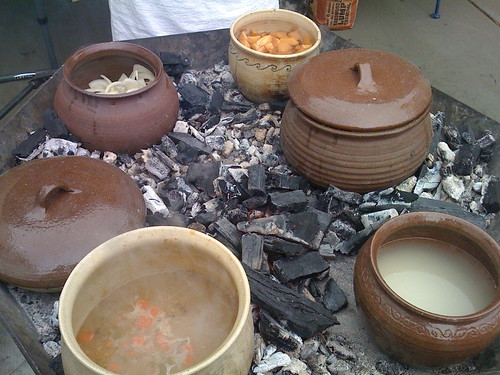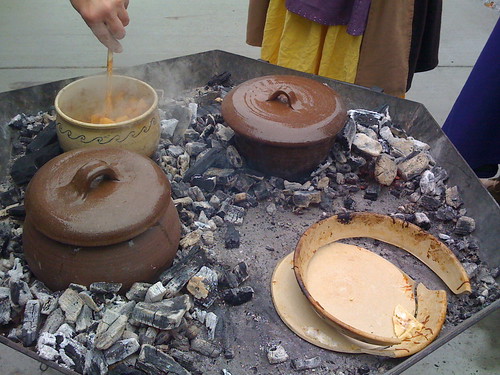This weekend I took some classes on historic cooking. One involved cooking a 17th century cake recipe from the original source text — that is, not translated into modern English, and not converted into modern measurements. I’ll be posting here about that experience, later.
The first class, though, was about medieval pottery, and how it would be used to cook. Mistress Gwenllyen the Potter showed us some examples of her pottery (all done based on authentic medieval designs), and then started right in on the cooking.
During the two-hour class, there were as many as 6 pots on the brazier at one time. The brazier had very hot charcoal, which was nice, because it was keeping us warm in the November weather as well as cooking lunch. To heat up a pot more, Mistress Gwen would just rake the coals closer to the pot, and to cool it down, just rake them further away.
The dishes you can see in the above picture are, starting at the upper right and going clockwise, stewed apples and spices (so good), chicken cooking on top of orzo pasta in the closed pot, rice (just started), beef stew, makerouns (in the closed pot on the left) and onion soup, just starting.
It worked really well. The pots that needed to come to a boil did so quite quickly. Three times during the workshop, however, we heard a loud cracking noise, indicating that one of the pots had cracked. The most spectacular breakage came when the pie plate cooking our makerouns (medieval macaroni and cheese, and quite tasty) broke into multiple pieces, as you can see in the next picture. We didn’t know it had broken into so many pieces until someone tried to pick it up, and the base (and food) stayed on the brazier while the edge of the pan lifted away. Have no fear, the food was fine. There was no spillage. We just had to scoop it off of the pan-base onto a plate.
It is pretty obvious why archaeological sites have so many potsherds — it seems very common for cooking pottery to break in use.
Despite the breakage, no serious amount of food was lost (just a little bit of mulled cider, I think), and everyone was warm and well-fed. It was a very fine meal.




[…] weekend, after the “cooking with medieval pottery” class I mentioned earlier, I took another class, this one on historic cooking from primary […]
What a cool class to be able to take. Can I ask what sort of business offered this class? Or was it a community center?
I’m guessing it wasn’t William Sonoma.
It was the SCA. The local SCA groups occasionally have events with classes all day.